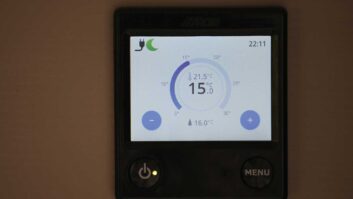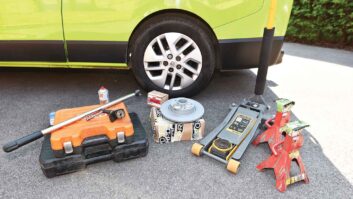1. Road tax
A motorhome is a special-purpose, M1-category vehicle built with accommodation. Those with a Maximum Technically Permitted Laden Mass (or MTPLM) of up to 3500kg are Private Light Goods Vehicles; those whose MTPLMs exceed 3500kg are classed as Private Heavy Goods Vehicles. For vehicle tax rates, see DVLA form V149.
2. Licencing
A driver who passed the road driving test before 1 January 1997 may drive a motorhome of up to 7500kg MTPLM on his or her B+C1 licence. At age 70, a licence holder may still drive a ’van of up to 3500kg MTPLM on the same basis as for a car. To continue driving a ’van that weighs more, the owner must submit a medical form D4 with renewal applications.
Drivers who passed their test on or after 1 January 1997 may drive a motorhome of up to 3500kg on a B licence. To operate any ‘van with an MTPLM of 3501-7500kg, they must pass a C1 licence test. A full C driving licence is required to operate a motorhome with an MTPLM of more than 7500kg – in order to do so, you must first pass an additional test. Note that some US RVs are heavier than 7500kg.
3. Seatbelts
Motorhomes registered on or after 20 October 2007 must have seatbelts on all forward- and rear-facing designated travelling seats. All seatbelts must be worn.
You may carry passengers in the back of older motorcaravans that lack seatbelts in the rear seats. However, Practical Motorhome strongly advises against this.
4. Speed limits
Speed limits for motorhomes weighing less than 3050kg are the same as for cars. Heavier ’vans are restricted to 50mph on single carriageways, 60mph on dual carriageways and 70mph on motorways. When towing a trailer in either case, the limit is 60mph on dual carriageways and motorways.
5. Consumer rights
If you feel you’ve been ‘had’ after buying a motorhome, the law is on your side. Note, though, that you have much less recourse if you bought privately. ‘Sold as seen’ means ‘buyer beware’.
The law is also on the side of the seller if you could have noticed any defects before buying. You can only sue for compensation if such defects were hidden or latent, such as damp.
For valid complaints, take the following steps:
- Put your complaint to the seller in writing. Set out in detail what’s wrong, why he should compensate you, and give him time to respond. Don’t be fobbed off by a seller’s claim that the manufacturer or supplier is to blame. If selling the product is his usual business, he’s responsible for defects. Be open to resolving your dispute by negotiation, mediation or arbitration – any fair means other than court action. This should only be a last resort.
- The Sale and Supply of Goods to Consumers Regulations 2002 require sellers to repair or replace a vehicle if it is truly defective. If this is impossible, you’re entitled to a price reduction or a refund. You have the same rights if repairing or replacing the vehicle causes you major inconvenience. Courts can force ’van manufacturers to live up to guarantees and warranties. If a defect appears within six months of delivery, the law assumes it was there when you bought the ’van, unless the seller proves otherwise.
- If negotiations fail, you can go to court. Start by issuing a claim form in a local county court. If claiming £10,000 or less, ask a district judge to hear the case in the small-claims division. It’s fairly informal and you may argue your own case if you wish. You can use a solicitor, but the judge won’t force the seller to pay your legal costs unless he or she thinks the seller has acted unreasonably.
- If you’re claiming £10,000-£25,000, you’re put on the ‘fast track’: not as quick as it sounds, and it can be costly. Your case will be heard in around 30 weeks. Fast-track claims are held in an open court. It’s best to hire a solicitor or barrister to present the case. Check whether your insurance covers legal expenses, which can be high here.
Be open to resolving your dispute by negotiation, mediation or arbitration









